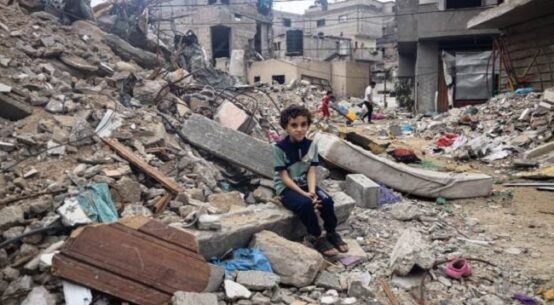
The Paris-based UN Educational, Scientific and Cultural Organization (UNESCO), whose mandate includes promoting the safety of journalists and ensuring press freedom worldwide, has pointed out that 2023 has been a particularly deadly year for journalists who work in conflict zones.
Audrey Azoulay, UNESCO Director-General, said at least 38 journalists and media workers were killed in the line of work in countries in conflict in 2023, compared to 28 in 2022 and 20 in 2021.
The ongoing hostilities in the Middle East were responsible for a large majority of conflict-related killings, with UNESCO having so far reported 19 killings in Palestine, 3 in Lebanon and 2 in Israel since 7 October.
The killings of journalists also took place in conflict zones and civil wars in Afghanistan, Cameroon, Syria and Ukraine.
“This is a dramatic toll. Never in a recent conflict has the profession had to pay such a heavy price in such a short space of time”.
“I call on regional and international actors to take immediate action to ensure that international law is respected. Journalists should never, under any circumstances, be targeted. And it is the responsibility of all actors to ensure that they can continue to exercise their profession safely and independently,” she said.
Jodie Ginsberg, CEO of Committee to Protect Journalists (CPJ), told IPS “the near-record high number of journalist killings in 2023 clearly indicates that we must work collectively to ensure that journalist killers are brought to justice, that a culture of safety prevails in newsrooms, and that the public’s right to be informed is protected from those whose power is threatened by the scrutiny of reporting.”
UNESCO said the figures do not include deaths of journalists and media workers in circumstances unrelated to their profession, which have also been reported in significant numbers in 2023.
And these tragedies are only the tip of the iceberg, with widespread damage and destruction of media infrastructure and offices and many other kinds of threats such as physical attack, detention, the confiscation of equipment or denial of access to reporting sites. Large numbers of journalists have also fled or stopped working.
Such a climate contributes to what UNESCO is describing as “zones of silence” opening up in many conflict zones, with severe consequences for access to information, both for local populations and the world at large.
This global trend can be explained by a significant decline in killings outside of conflict zones, which have reached their lowest total for at least fifteen years – especially in Latin America and the Caribbean, where 15 killings were reported, compared with 43 in 2022, according to UNESCO.
In a March 7 report, CPJ provided its most recent and preliminary account of journalist deaths in the war. “Our database will not include all of these casualties until we have completed further investigations into the circumstances surrounding them.”
“The Israel-Gaza war has taken a severe toll on journalists since Hamas launched its unprecedented attack against Israel on October 7 and Israel declared war on the militant Palestinian group, launching strikes on the blockaded Gaza Strip”.
CPJ said it is investigating all reports of journalists and media workers killed, injured, or missing in the war, which has led to the deadliest period for journalists since CPJ began gathering data in 1992.
As of March 7, CPJ’s preliminary investigations showed at least 95 journalists and media workers – higher than the UNESCO figures– were among the more than 31,000 killed since the war began on October 7—with more than 30,000 Palestinian deaths in Gaza and the West Bank and 1,200 deaths in Israel.
The Israel Defense Forces (IDF) told Reuters and Agence France Press news agencies last October that it could not guarantee the safety of their journalists operating in the Gaza Strip, after they had sought assurances that their journalists would not be targeted by Israeli strikes, according to a Reuters report.
Journalists in Gaza face particularly high risks as they try to cover the conflict during the Israeli ground assault, including devastating Israeli airstrikes, disrupted communications, supply shortages, and extensive power outages.
CPJ said reporting from the front lines of a conflict is one of the most challenging assignments a journalist can undertake.
“It is important that journalists prepare before an assignment to understand the environment they are entering –and the deadly threats they may face”.
Striking a more personal note, the CPJ said it is deeply saddened by the killing of Al-Jazeera Arabic camera operator Samer Abu Daqqa and the injuries suffered by his colleague, Al-Jazeera Gaza bureau chief Wael Dahdouh who was injured in what was believed to be an Israeli drone strike in Khan Yunis, southern Gaza, on December 15.
The CPJ called on international authorities to conduct an independent investigation into the attack to hold the perpetrators to account.
The wife, son, daughter and grandson of Wael Dahdouh, were also killed in an Israeli air raid.
Thalif Deen is a former Director, Foreign Military Markets at Defense Marketing Services; Senior Defense Analyst at Forecast International; and military editor Middle East/Africa at Jane’s Information Group, US.


